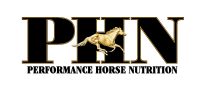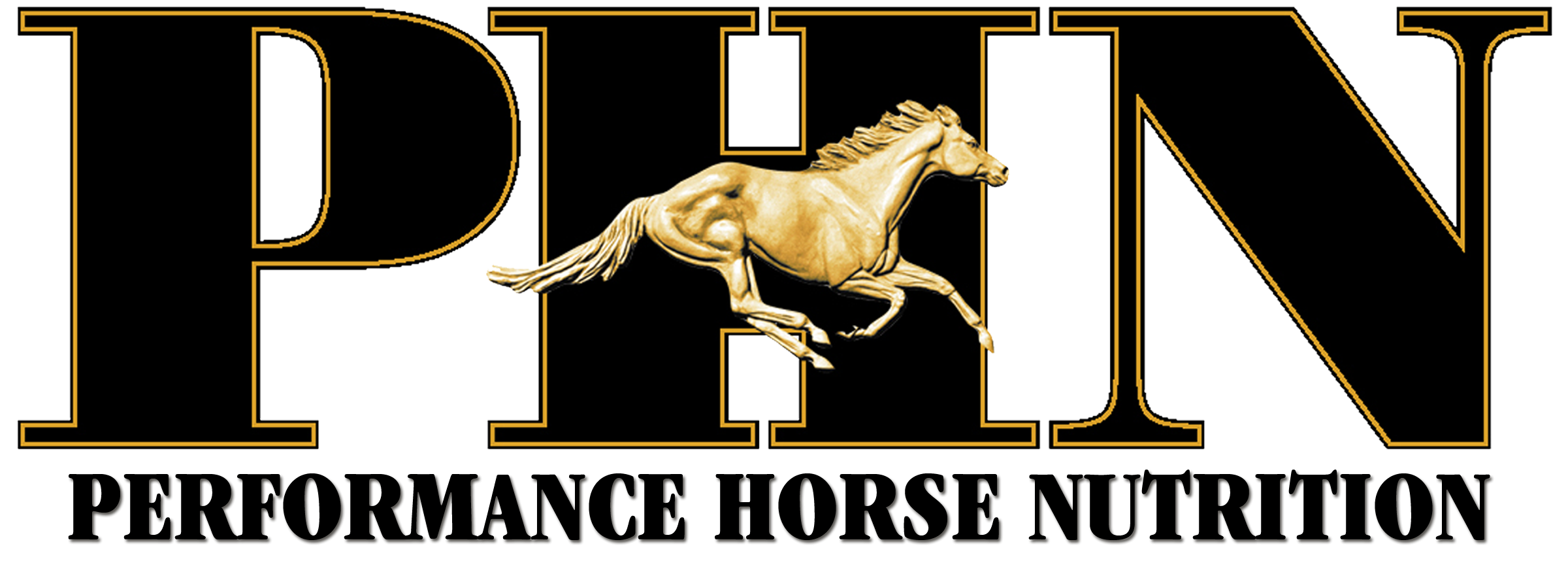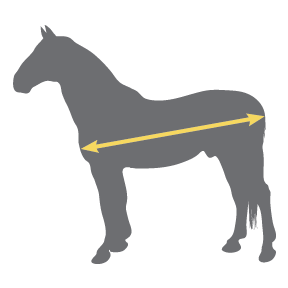THE ART OF
BODY CONDITION SCORING
September 2016

Written by Performance Horse Nutrition
All horse owners want their horses to be healthy, look good, and be physically fit athletes. Nutritional management is a simple, yet cost effective tool that we can apply to ensure, improved performance and health in our horses. Body condition scoring serves as an effective tool to determine the nutritional needs of your horse. Using a numeric scoring system from 1 to 9, we can estimate the horse’s body energy reserves. This information can be used when deciding on the right feed choice. Body condition scoring involves the palpation and visual assessment of the degree of fatness of various areas of the horse, such as: over the ribs, tail head area, neck and withers, and behind the shoulders. Regular condition scoring of your horse will help in deciding if your horse needs to gain, lose or just maintain weight.
Body condition can be affected by a variety of factors such as: food availability, reproductive activities, weather, performance or work activities, parasites, dental problems, and feeding practices. The actual body condition of a horse can also affect its reproductive capability, performance ability, and health status. Therefore, it is important to achieve and maintain proper body condition. In order to do this, one must evaluate body fat in relationship to body musculature.
The body condition scoring (BCS) system assigns a numerical value to fat deposition as it occurs in various places on the horse’s body. The system works by assessing fat both visually and by palpation (examination by touch), in each the following areas: the loin, ribs, tail head, withers, neck, and behind the shoulders.
Loin: An extremely thin horse will have a ridge down the back where the back bone projects up. No fat can be felt along the back of the horse. However, this is one of the first areas to fill in as a horse gains weight. As the horse gets fatter, an obvious crease or depression forms down the back because of fat accumulation along the back.
Ribs: The next place to look is in the ribs. Visually assess the rib area, and then run your fingers across the rib cage. A very thin horse will have prominent ribs, easily seen and felt, with no fat padding. As the horse begins to gain weight, a little padding can be felt around the ribs; by BCS 5 the ribs will no longer be visible, but can be easily palpated by passing a hand down the rib cage. Once the horse progresses towards obesity, feeling the ribs will be very difficult.
Tail head: In a very thin horse up to a BCS of 3, the tail head is prominent and easily visible. Once the horse starts gaining weight, fat fills in around the tail head. Fat can easily be palpated, and as the horse becomes obese, the fat will feel soft and begin to bulge.
Withers: Conformation of the withers may affect your assessment of body condition. The prominence or sharpness of the withers may vary between breeds; a Thoroughbred typically has more prominent withers than a Quarter Horse. However, if a horse is very thin, the underlying structure of the withers will be easily visible. At a BCS of 5, the withers will appear rounded. At a BCS of 6 through 8, varying degrees of fat deposits can be felt along the withers. In obese horses, the withers will be bulging with fat.
Neck: The neck allows for refining the assessment of body condition. In an extremely thin horse, you will be able to see the bone structure of the neck, and the throatlatch will be very trim. As the horse gains condition, fat will be deposited down the top of the neck. A BCS of 8 is characterized by a neck that is thick all around with fat evident at the crest and the throatlatch.
Shoulder: The shoulder will also help you refine the condition score. As a horse gains weight, fat is deposited around the shoulder to help it blend smoothly with the body. At increasing condition scores, fat is deposited behind the shoulder, especially in the region behind the elbow.
Once body condition scores have been determined for your horses, how can you tell what is too fat or too thin? An optimum score has been described as a 5 or 6. This horse has some fat but has not yet reached the fleshy point. A horse below a 5 may have fat stores too low to maintain a healthy status if stressed. Body fat reserves are important to the overall health of a horse because fat represents energy reserves that can be used during periods of stress. Horses at a 3 or below have virtually no fat reserves; if more energy is needed, protein is broken down from muscle to meet energy requirements. In addition to increasing the quantity of feed, horse owners should consider checking their horse’s teeth, treating for internal parasites and evaluating their horse’s health status.
If a horse is exposed to extreme cold, lactation, or some other severe stress, a condition score of 7 may be desired. A horse can easily burn a great deal of fat in a short period of time in a high stress situation. Body fat also plays a role in reproduction. Mares with a body condition score of 3 or below develop endocrine imbalances and have difficulty conceiving.
Horses with high condition scores are also predisposed to problems. Fat horses tend to be less agile performers and develop joint issues more readily than their optimal weighted counterparts. Fat horses are also more prone to colic and an array of metabolic diseases such as laminitis. Overweight horses still need to be supplied with a balance of vitamins and minerals.
One more factor you should consider when assigning a body condition score is the basic body type of your horse. Some horses, distribute their fat in different areas to others. A score of 5 may look different on a Quarter horse compared to a Thoroughbred.
This body condition scoring system will by no means tell you how fit your horse is for performance. Although horses in training will have less fat due to their exercise intensity, the fat level has nothing to do with muscle tone, cardiovascular fitness, or any other measure of athletic conditioning.
Regular body condition scoring of your horses is a valuable tool for proper horse management. Once you have identified the appropriate body condition score for your horse, you can evaluate the horse regularly and adjust the feed intake and exercise to maintain the proper body condition score. It is especially important to condition score the horse during the winter, when extra energy is utilized to maintain body temperature, and the winter hair coat makes visual observation more difficult.
Score Condition Description
| Condition | Neck | Withers | Loin | Tail head | Ribs | Shoulder |
1 Poor | Bone structure easily noticeable, animal extremely emaciated, no fatty tissue can be felt. | Bone structure easily noticeable. | Spinous processes project prominently. | Spinous processes project prominently. | Tailhead (pinbone) and hook bones project prominently. | Bone structure easily noticeable. |
2 Very Thin | Faintly discernible, animal emaciated. | Faintly discernible. | Slight fat covering over base of spinous processes. Transverse processes of lumbar vertebrae feel rounded. Spinous processes are prominent. | Tail head prominent. | Slight fat cover over ribs. Ribs easily discernible. | Shoulder accentuated. |
3 Thin | Neck accentuated. | Withers accentuated. | Fat buildup halfway on spinous processes but easily discernible. Transverse processes cannot be felt. | Tail head prominent but individual vertebrae cannot be visually identified. Hook bones appear rounded but are still easily discernible. Pin bones not distinguishable. | Slight fat cover over ribs. Ribs easily discernible. | Shoulder accentuated. |
4 Moderately Thin | Neck not obviously thin. | Withers not obviously thin. | Negative crease along back. | Prominence depends on conformation; fat can be felt. Hook bones not discernible. | Faint outline discernible. | Shoulder not obviously thin. |
5 Moderate | Neck blends smoothly into body. | Withers rounded over spinous processes. | Back level. | Fat around tail head beginning to feel spongy. | Ribs cannot be visually distinguished but can be easily felt. | Shoulder blends smoothly into body. |
6 Moderately Fleshy | Fat beginning to be deposited. | Fat beginning to be deposited. | May have slight positive crease down back. | Fat around tail head feels soft. | Fat over ribs feels spongy. | Fat beginning to be deposited. |
7 Fleshy | Fat deposited along neck. | Fat deposited along neck. | May have positive crease down back. | Fat around tail head is soft. | Individual ribs can be felt, but noticeable filling between ribs with fat. | Fat deposited behind shoulder. |
8 Fat | Noticeable thickening of neck, fat deposited along inner buttocks. | Area along withers filled with fat. | Positive crease down back. | Tail head fat very soft. | Difficult to feel ribs. | Area behind shoulder filled in flush with body. |
9 Extremely Fat | Bulging fat. Fat along inner buttocks may rub together. Flank filled in flush. | Bulging fat. | Obvious positive crease down back. | Building fat around tail head. | Patchy fat appearing over ribs. | Bulging fat. |
– Dr. Tania Cubitt

